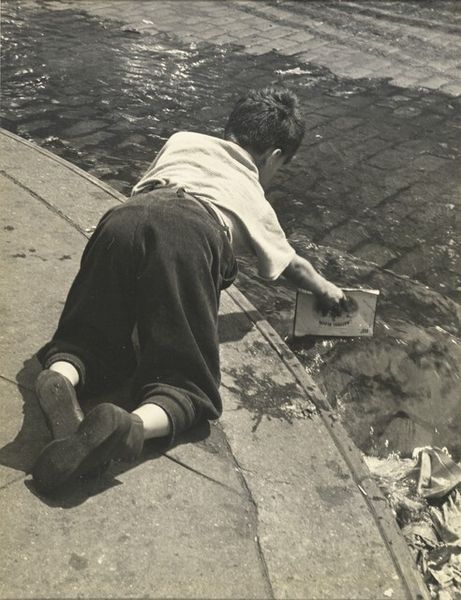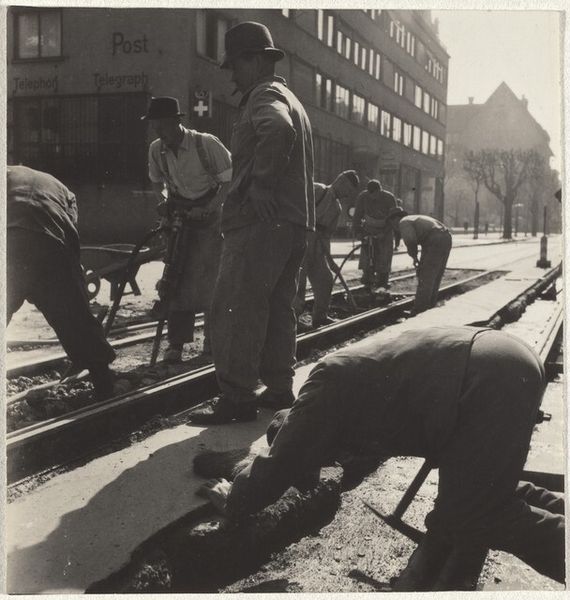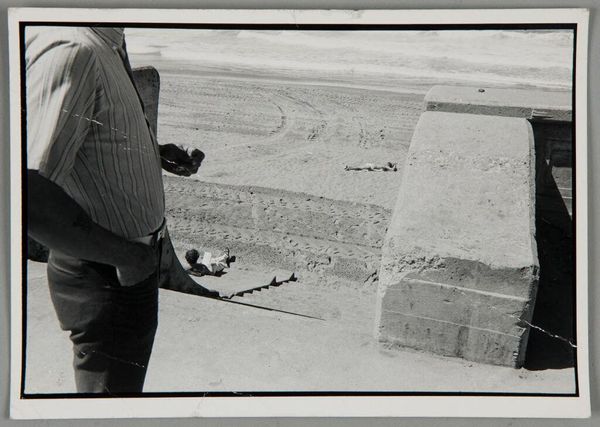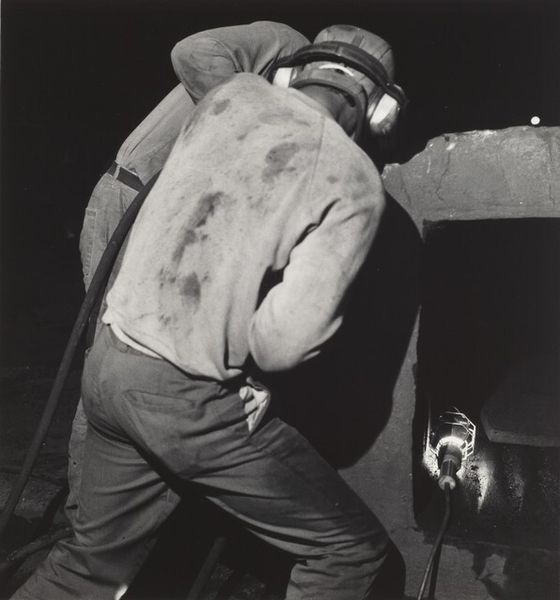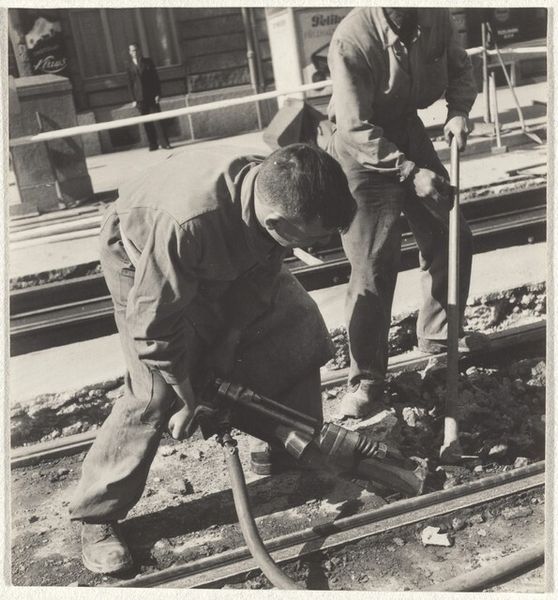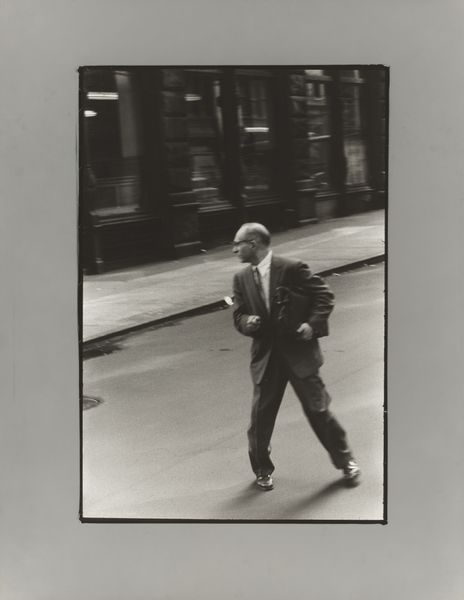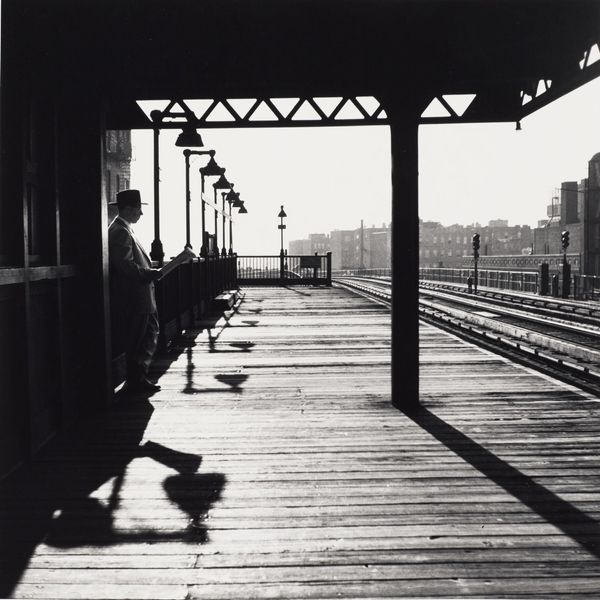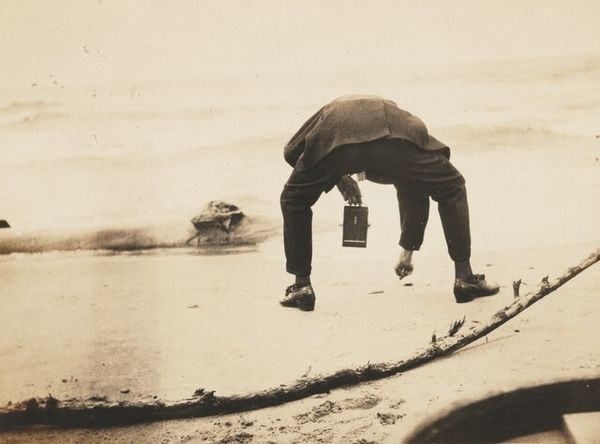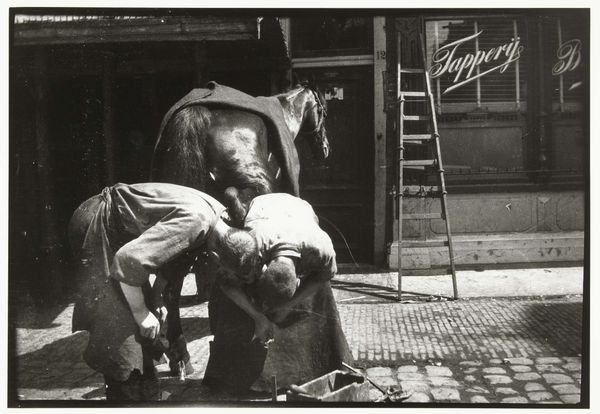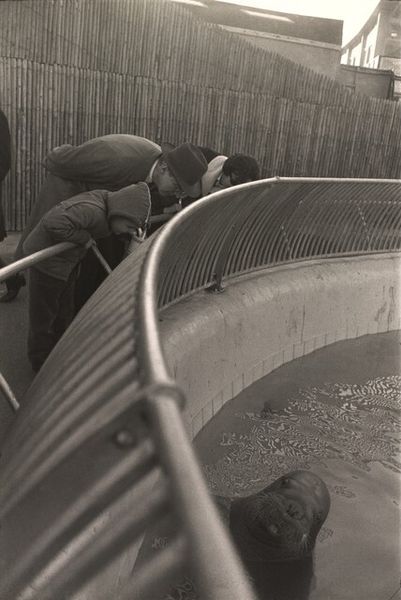
print, photography
# print
#
street-photography
#
photography
#
monochrome photography
#
realism
#
monochrome
Dimensions: sheet (trimmed to image): 5.8 x 5.5 cm (2 5/16 x 2 3/16 in.)
Copyright: National Gallery of Art: CC0 1.0
Editor: Robert Frank’s “Streetworkers,” a black and white print made sometime between 1941 and 1945, depicts a worker welding tracks. The strong diagonals formed by the tracks, and the bending figure of the worker, create a striking composition. It feels like a fleeting moment captured, a quiet record of labor. What do you see in this piece? Curator: The welder is almost a contemporary Vulcan, forging something essential for the community. Observe how Frank has framed him – the worker is hunched, anonymous, almost sacrificing himself in the creation. Note how the flash momentarily erases a section of the landscape, drawing the eye and underscoring the symbolic and material transformation in progress. Doesn’t the image, in its starkness, recall certain propaganda aesthetics? Editor: Propaganda aesthetics? I hadn’t thought of that. I saw the image as a purely objective documentation of labor. What makes you say propaganda? Curator: It's in the way the everyday is presented as monumental, imbued with purpose. This recalls visual languages meant to ennoble certain actions. The contrast and starkness, too, create an emotional distance, prompting observation rather than connection. Can we truly say any representation is objective, or do all choices convey specific meanings? Think about what this photograph may represent within the visual history of that period. Editor: So, even in its realism, the photo conveys a constructed idea about work. Looking closer, I now see how the composition emphasizes the worker’s isolation, perhaps highlighting the cost of progress. Thanks for opening up new perspectives! Curator: And you’ve helped me reconsider how everyday labor could become a silent icon of resilience during a transformative period. The cultural echoes within such images remain surprisingly potent.
Comments
No comments
Be the first to comment and join the conversation on the ultimate creative platform.
